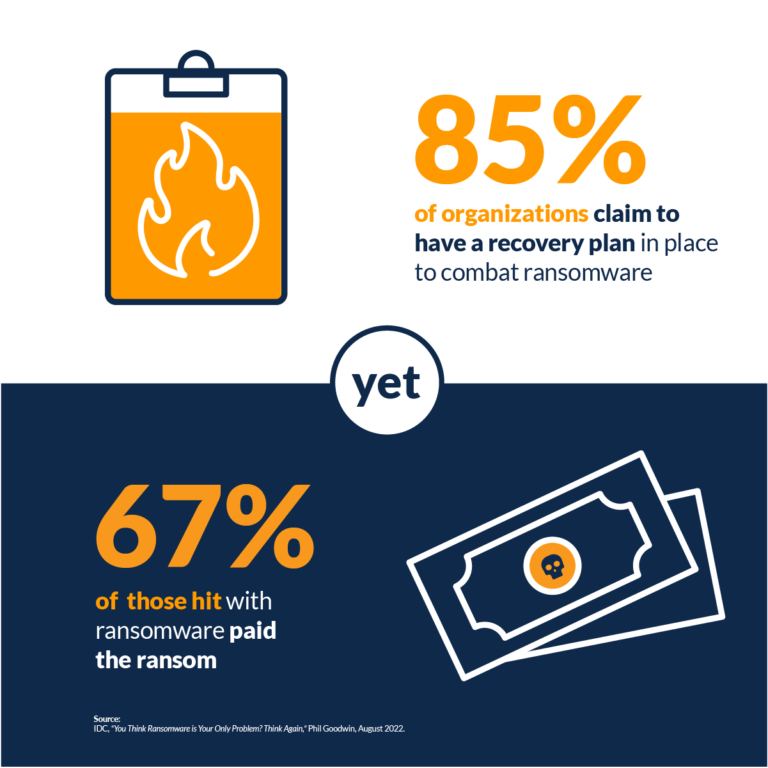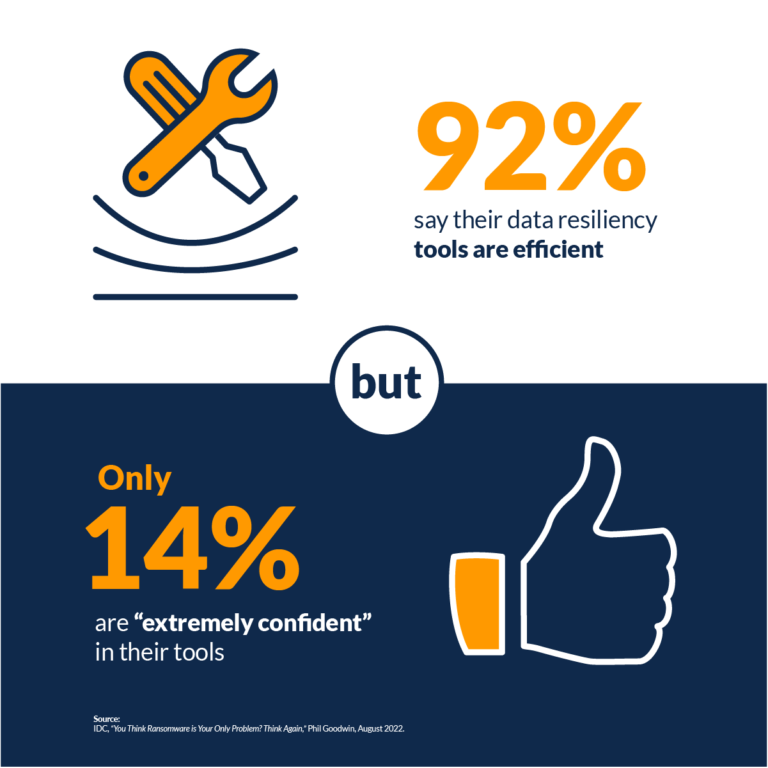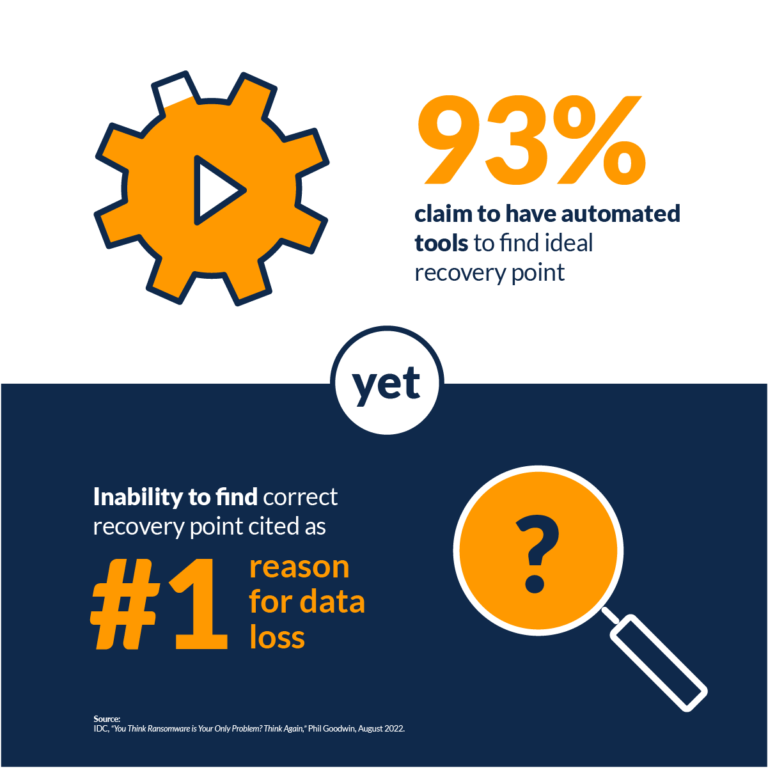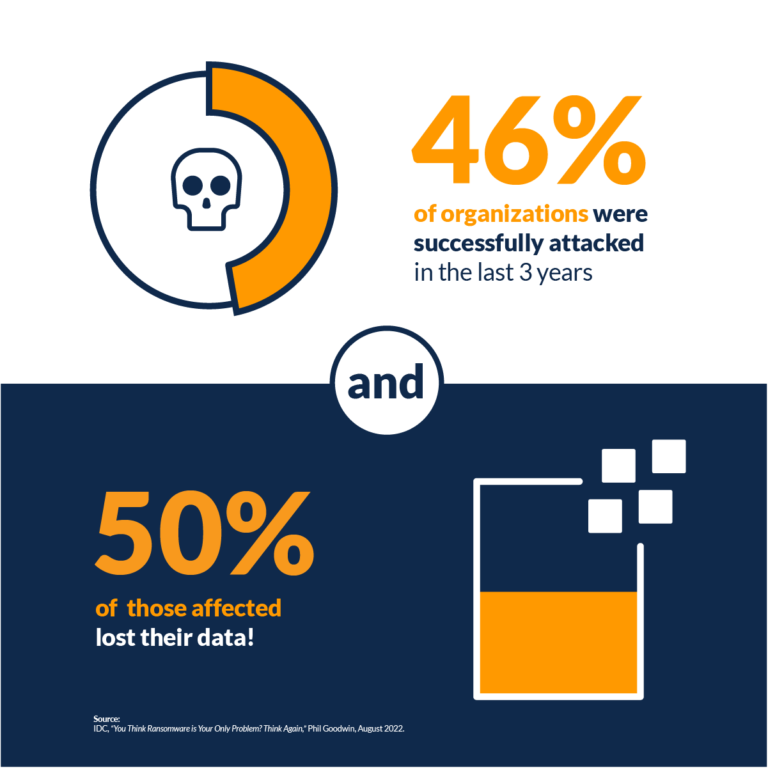This begs the question, how can you best prepare and protect your critical data?
Download the free IDC white paper to get recommendations for ransomware recovery and data resiliency best practices
Read the full IDC white paper and download the infographic to understand the gap in IT leaders’ responses to cyber threats, as well as explore IDC’s recommendations to recover clean data, mitigate damage, and get mission-critical systems up and running quickly following a breach.
Closing the gaps in today’s ineffective ransomware defenses
It’s clear the human element will always hold us back to some degree. While the majority of surveyed IT leaders felt they had a highly effective system, they clearly understand there is room for improvement. The No. 1 desire from survey respondents was for fully automated and non-disruptive infrastructure updates. The No. 2 ask was for greater automation and recovery orchestration from ransomware, specifically automation to find the most recent recovery point.
The only way we can begin to fight cyber attacks and data loss is by relying on products that leverage increasingly intelligent machine learning and automation enable IT leaders to react faster, mitigate the impact of attacks, and increase overall business resilience. In building automated systems, nothing matches the cloud’s pure scale and compute capability.
Air-tight cyber defense and seamless ransomware recovery with Druva
As the leading solution built entirely in the cloud and able to leverage its full capabilities, Druva is designed to simplify your approach to data resiliency. Druva’s Curated Recovery feature automatically identifies the latest clean version of each file, replacing a weeks-long process. With an intelligent platform, IT teams accelerate recovery and return operations to normal faster. This enables your team to:
- Prevent data loss with point-in-time recovery to get the most recent, clean data from the entire time frame of an attack
- Automate incident response, prevent reinfection, and empower forensics with SOAR integrations
- Automatically consolidate the best version of each file into a single “Golden Snapshot” to ensure a speedy recovery and limit downtime
Visit the ransomware recovery page of the Druva site to learn more, and discover Druva’s Data Resiliency Guarantee — the industry’s only guarantee of data protection against five key threats — up to $10 million.
¹ IDC White Paper, sponsored by Druva, “You Think Ransomware Is Your Only Problem? Think Again,” doc #US49628322, September 2022.




